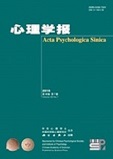In virtual reality (VR), rotating the head to select a moving target is common. A moving target involves two general directions, that is movement toward or away from a user; thus, knowing the characteristics difference between selecting the approaching target (interception movement) and receding target (pursuit movement) is important for designing an efficient user interface.
In this study, 17 participants (7 males; mean age = 22.5 ± 2.5 years) were given an Oculus Rift helmet-mounted display to wear and instructed to complete a task in a VR environment. They were required to position a small opaque sphere (cursor) that appeared randomly on the left or right side of the visual field into a larger half-transparent moving sphere (target) on the other side of the visual field quickly and accurately by rotating their head. The target moved randomly toward or away from the cursor horizontally, which were both at the participants’ eye height, with a depth of 3 meters. The diameter of the cursor was fixed at 4°. The initial movement amplitude (A; distance between the center of the cursor and target; 20° and 40°), the target tolerance (TT; size difference between the target and cursor; 4°, 6°, and 8°), and the target’s moving velocity (V; 0.5 m/s, 1 m/s, 1.5 m/s, and 2 m/s) were varied (Figure 1). The cursor movement paths were divided into three phases for analysis: acceleration, deceleration, and correction (Figure 2).
Results showed that the average total movement time (MT) of selecting receding targets was significantly larger than that of selecting approaching targets (F(1, 16) = 99.64, p < 0.001, η2p = 0.86) and the two movements performed differently under different factors (Figure 3). A and TT had a similar influence on the total MT for both movements, which increased as A increased (Pursuit: F(1, 16) = 135.61, p < 0.001, η2p = 0.89; Interception: F(1, 16) = 132.47, p < 0.001, η2p = 0.89) and TT decreased (Pursuit: F(1.09, 17.40) = 91.91, p < 0.001, η2p = 0.85, Greenhouse-Geisser correction; Interception: F(1.03, 16.54) = 40.24, p < 0.001, η2p = 0.72, Greenhouse-Geisser correction). In contrast, V had an inverse effect on the total MT for the two movements. A large V leaded to a long total MT for the pursuit movement (F(1.38, 22.11) = 48.49, p < 0.001, η2p = 0.75, Greenhouse-Geisser correction), whereas the total MT for the interception movement decreased as V increased (F(1.16, 18.59) = 12.43, p = 0.002, η2p = 0.44, Greenhouse-Geisser correction). Moreover, the interception movement showed a light U-shaped relationship between the total MT and V, with the lowest point at 1.5 m/s when A was 20° (Figure 3c). The two movements were further compared in the three phases (Figure 4). The outcome showed that the MT of pursuit movement was only longer in the acceleration phase (F(1, 16) =162.32, p < 0.001, η2p = 0.91) and deceleration phase (F(1, 16) =119.31, p < 0.001, η2p = 0.88) compared with the interception movement, while the MTs of two movements were very close in the correction phase (F(1, 16) = 0.001, p = 0.974). Moreover, the three factors had different impact on the two movements in three phases. In the acceleration phase, MT increased for the pursuit movement but decreased for the interception movement as A decreased (Pursuit: F(1, 16) = 50.26, p < 0.001, η2p = 0.76; Interception: F(1, 16) = 90.03, p < 0.001, η2p = 0.85) and V increased (Pursuit: F(1, 16) = 50.26, p < 0.001, η2p = 0.76; Interception: F(1, 16) = 90.03, p < 0.001, η2p = 0.85). In the deceleration phase, although MT was positively related to A (Pursuit: F(1, 16) = 128.83, p < 0.001, η2p = 0.89; Interception: F(1, 16) = 309.80, p < 0.001, η2p = 0.95) and negatively related to V (Pursuit: F(1.73, 27.66) = 11.28, p < 0.001, η2p = 0.41, Greenhouse-Geisser correction; Interception: F(1.76, 28.20) = 195.38, p < 0.001, η2p = 0.92, Greenhouse-Geisser correction) for both movements, the MT of interception movement increased more quicky as A increased (F(1, 16) = 38.03, p < 0.001, η2p = 0.70) and decreased more quickly as V increased (F(1.95, 31.11) = 67.77, p < 0.001, η2p = 0.81) as compared to the pursuit movement. In the correction phase, the TT had a same impact on the MT for both movements (F(1.32, 21.18) = 0.20, p = 0.728, Greenhouse-Geisser correction), which decreased with an increase of TT (F(1.08, 17.25) = 55.46, p < 0.001, η2p = 0.78, Greenhouse-Geisser correction). Moreover, the increasing V (F(1.30, 20.73) = 25.32, p < 0.001, η2p = 0.61, Greenhouse-Geisser correction) and A (F(1, 16) =129.81, p < 0.001, η2p = 0.89) increased the MT for the pursuit movement, while the MT of the interception movement was not affected by both V and A. Based on the findings, a model was proposed to depict the relationship between the total MT and the three factors, which fit the participants’ performance well (Figure 5).
This study showed that the pursuit and interception movements had different characteristics. Selecting a receding target was more difficult than selecting an approaching target via head rotation, and A and V, but not TT, had a different impact on human performance for the two movements. The empirical findings suggested the importance of considering both movements separately when designing a user interface. The model provides a valid method for quantitatively evaluating the characteristics of human performance in selecting moving targets.




